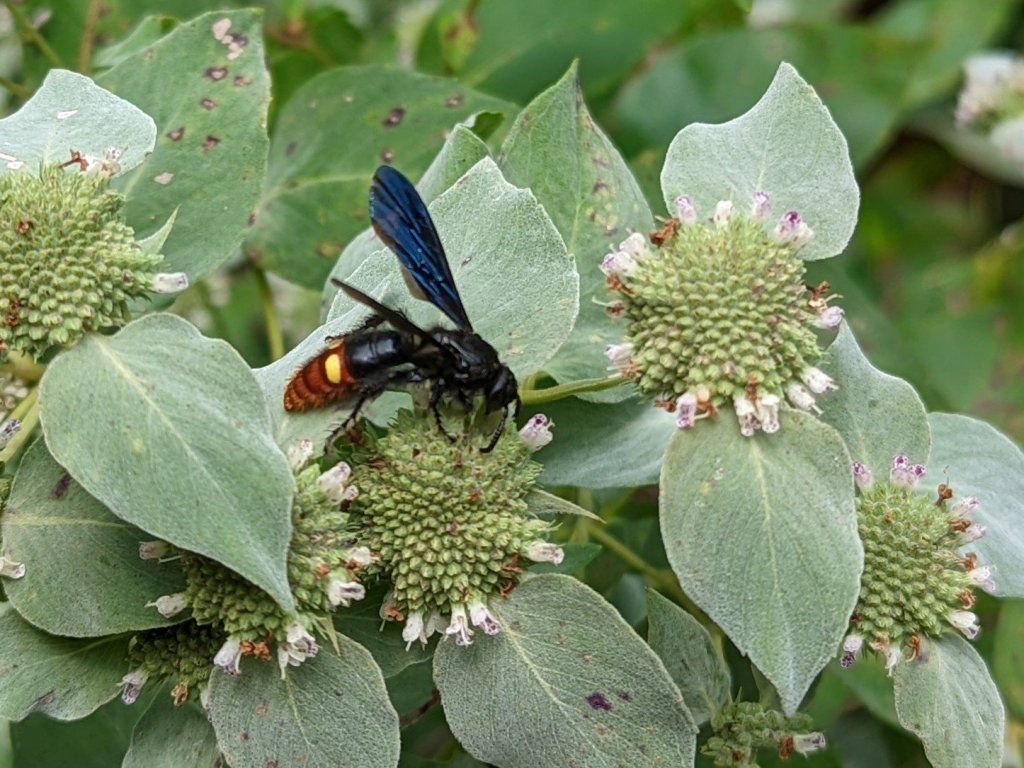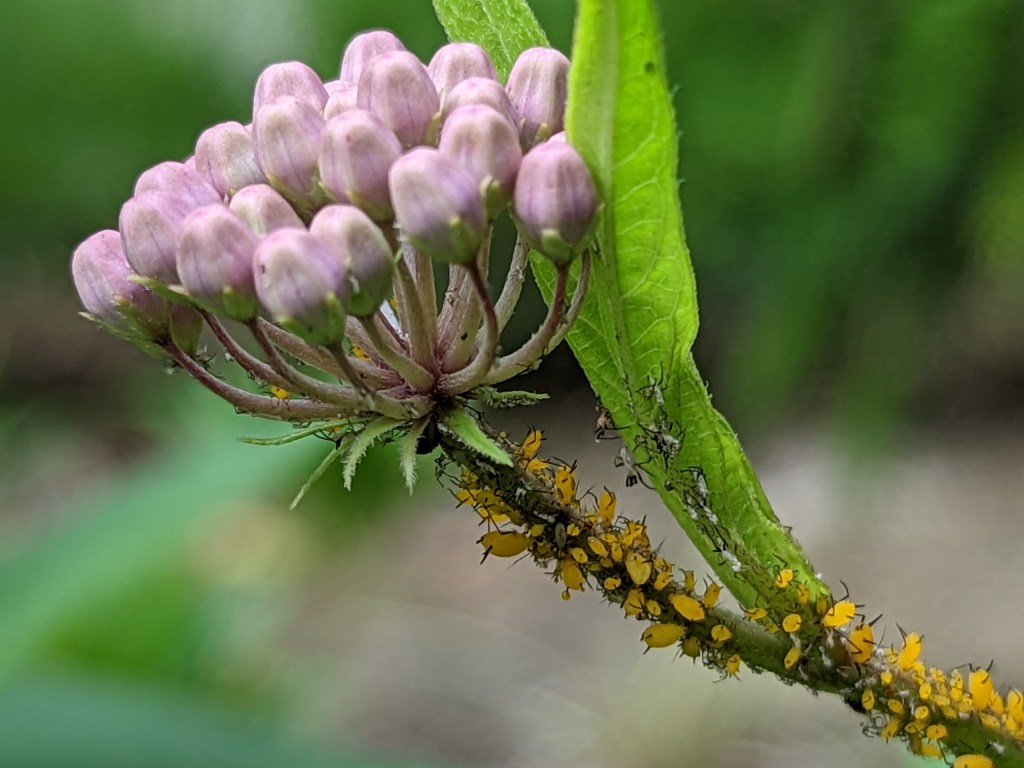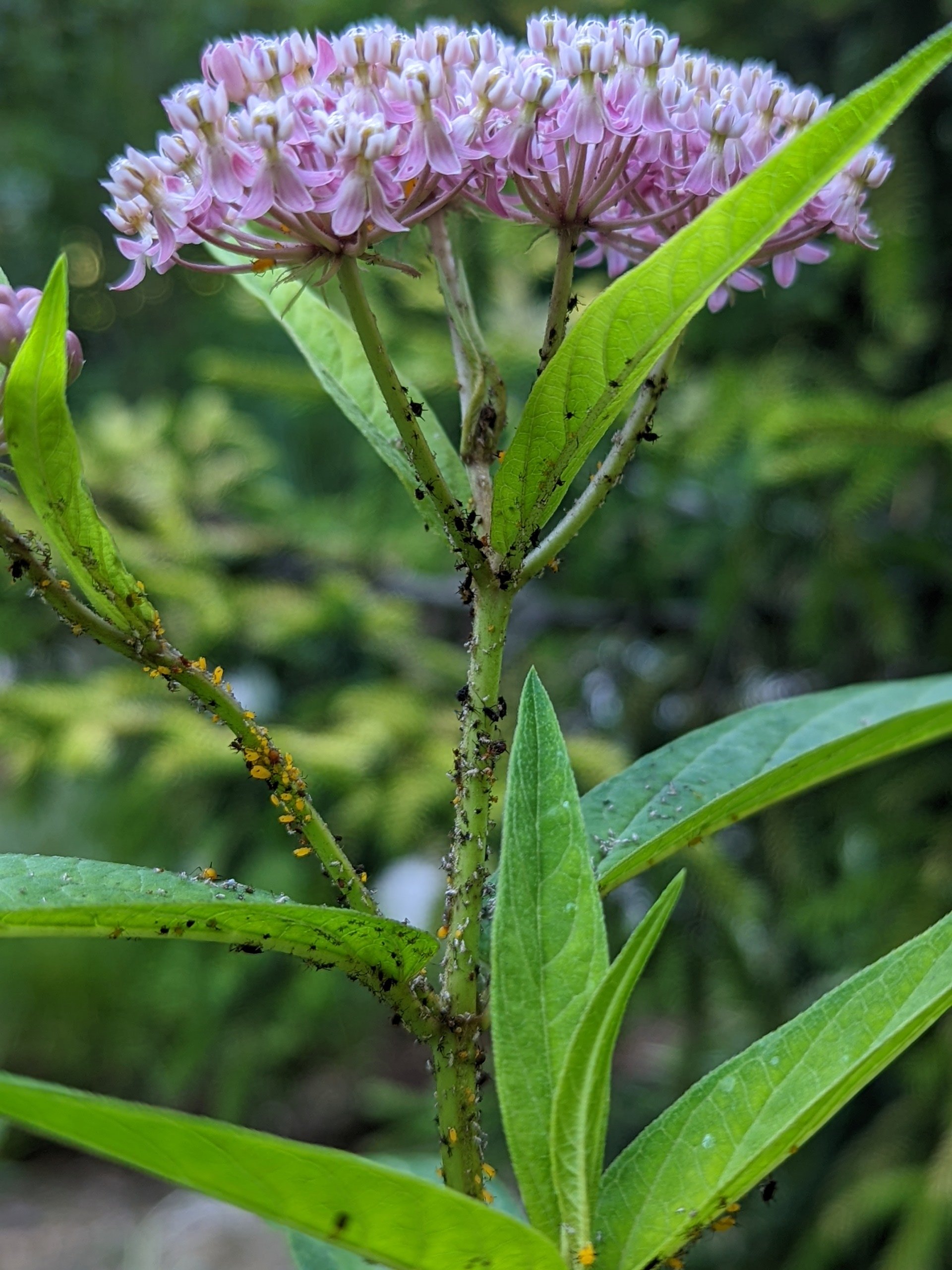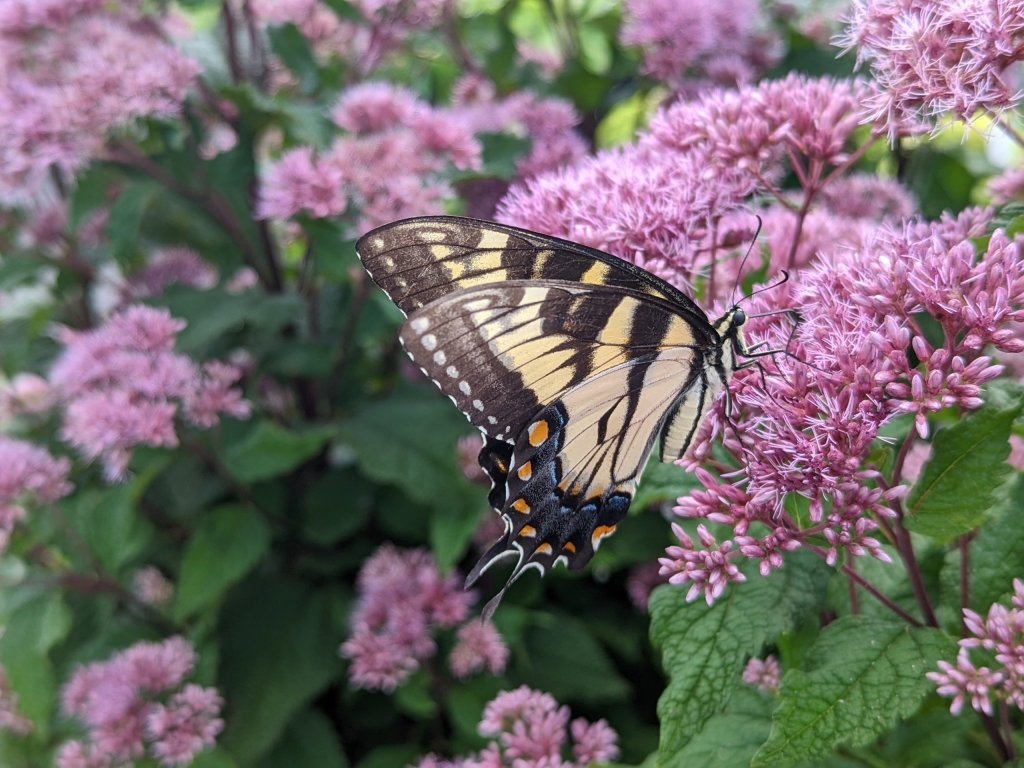While mountain mint (Pycnanthemum muticum, below) is a marvelous native for pollinators, the gardener must be prepared to occasionally tame its relentless advance into open ground. The mint doesn’t spread overnight, but steadily, and a watchful eye is necessary by midsummer to protect shorter neighbors as tall, outermost stems flop after rain showers. This taming is complicated by the presence of bees and wasps on every sunny afternoon, so cutting must be done on cloudy days or in evening hours.

So, forewarned, I heartily recommend planting mountain mint, and if it is to be plugged into a gap in an established border, all the better. Here, the clump covers a hundred square feet or more of partially sunny, slightly damp soil, and I’ve never given a thought to pulling it out.

I am quite pleased to see Monarch butterfly caterpillars on the milkweeds (Asclepias incarnata, above). This closely follows an infestation of aphids as flowers faded, which was followed by small, black beetles that nearly rid the milkweeds of aphids (below). The beetles moved on, and the aphids grew again in numbers. While the aphids weaken stem tips, the caterpillars munch the leaves, so soon the milkweeds will be naked, with wilting stems. But, next spring they’ll be back to again start this cycle. The aphids, beetles, and caterpillars are of no concern, but a part of the reason that makes milkweeds worthy of inclusion in the garden.


Following a brief absence from the garden as deer pruned Joe Pye weeds were delayed in flowering, the swallowtails are back (below). The planted Joe Pye weeds are the compact growing ‘Little Joe’, while numerous seedlings grow much taller, occasionally requiring editing, but rarely in the increasing wildness of the garden after thirty-three years.

My recollection is a bit foggy, but there was a time I fretted over caterpillars in the redbuds and lacebugs in the azaleas. I sprayed an insecticidal soap on occasion, but conveniently, as the garden grew in size and became more diverse, many of these issues came under control naturally. Every leaf in the garden must not be perfect, and many tiny beasts are enjoyed alongside the garden’s blooms.


Just out of curiosity Dave – have you ever grown Ironweed in your garden? We used to have a few plots of it growing wild on our property & both the height + the gorgeous deep royal purple flowers were very striking.
I haven’t grown it, but there are some growing just outside the garden. I’m always tempted to grab some seed, but of course I forget.